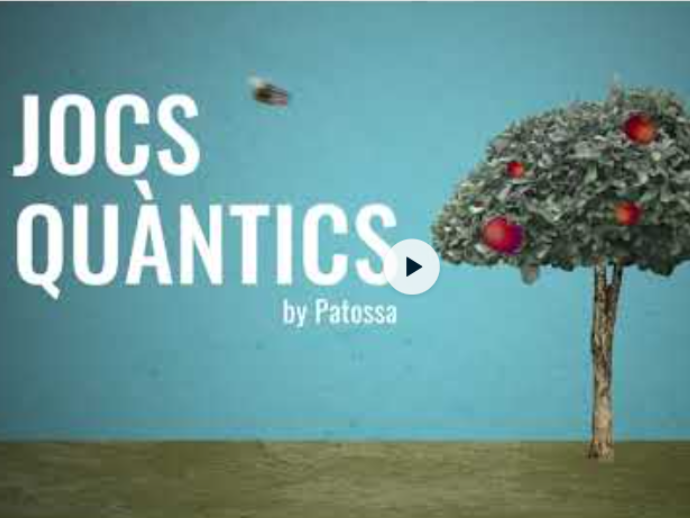Informative videos to bring quantum physics to everyone
As part of the City and Science 2025 Biennial, a series of videos entitled "Quantum Games" has been launched, produced by Patossa and designed to bring complex concepts of quantum physics closer to a wide audience, from curious young people to people without scientific training, and link them with the four major thematic pillars of this event.
A playful and accessible look at the quantum world
With a close and creative style, the pieces use visual metaphors and conceptual games to make abstract ideas such as superposition, entanglement or wave-particle duality understandable. Instead of explaining the subject in a complex way or with complicated formulas, they resort to animated narratives and stories that invite you to imagine how subatomic particles work.
The series of four videos describes the following basic concepts, in capsules of less than a minute:
- Quantum entanglement: through the audiovisual entitled “connected bubbles”: a poetic way of seeing how two particles can be related, even if they remain far apart.
- Quantum superposition: which uses the reference of the famous Schrödinger's cat, transformed here into a “doll” that can be in two states at the same time. If we do not see the doll or cat inside a box, it is likely that it is both alive and dead at the same time.
- Indeterminacy and probability: which states that in the quantum world everything is based on uncertainty, and this breaks with the more deterministic conception of the classical world.
- Particle-wave duality: which introduces the dilemma of whether in the subatomic world, we must talk about particles, waves or both, depending on the point of view from which we can observe them.
A tool for disseminating information in the midst of the quantum revolution
This year, the City and Science Biennial focuses its efforts on disseminating the various implications and novelties of the quantum era. In this context, Patossa's audiovisuals play a key role as a gateway: they do not serve to describe the theory only, but also and above all to generate curiosity and reflection for a general public.
In this same sense, the much more playful approach, reinforces the idea that science is not only for those who study it: it can also be a cultural, artistic and accessible experience. The City and Science Biennial aims to do just that: connect citizens with the technological and scientific revolutions that are transforming the world, from a critical but hopeful point of view.

